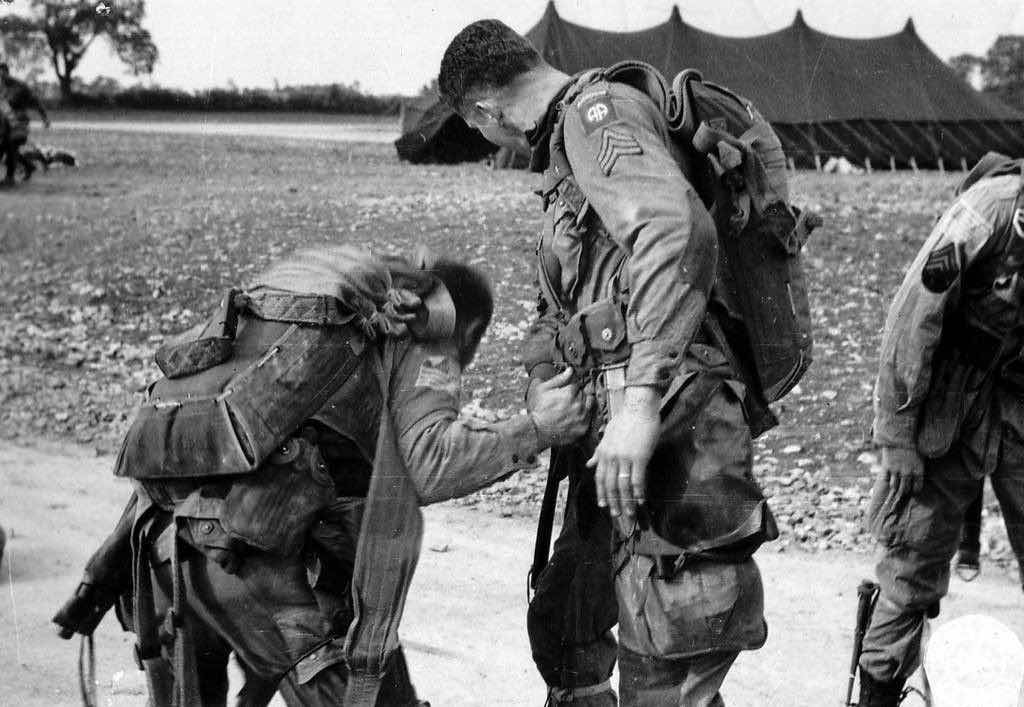


As the paratroopers organized in the dark and came together, the fighting began. Objectives were accomplished, and a series of small battles was fought throughout the Cotentin peninsula. Unit cohesion had basically disintegrated, and troopers partnered up with and fought with whoever they met.
Before we get too far away from the 1/6 scale and turn this into a history blog, it’s time to look at the individual US Airborne divisions. How were they they same? How were they different? They were unique units, and the qualities that made them unique were often subtle at best.
The 82nd was the first US airborne division established. It was a combat hardened division whose men had fought in both Sicily and Italy. The division’s first combat jump was in Sicily, as part of Operation Husky.
The 101st airborne division was new to the parachute infantry. It was formed in August of 1942 from the old 101st division. Cadre for the 101st, in the form of NCOs and officers was provided in part by bringing men over from the 82nd.
Does this mean that they both were the same, and only wore different unit patches? To a point, but the men of each unit were proud, the men of each unit thought their division was the best, and they did their best to distinguish themselves as “All Americans” or “Screaming Eagles.”
How were they different? While their uniforms and equipment were mission-specific and basically the same, some subtle difference were evident.
While both wore helmet nets, the 82nd used considerably less burlap scrim. Members of the 101st stuffed as much in as they could.
The 82nd used both straight handlers and folding entrenching tools. The 101st primarily used the folding etools. It was rare to see a Screaming Eagle with a straight handled shovel.
The men of the 101st were given cricket clickers to use as a means of identification in the dark. The clicker was a toy that made a click-clack sound when squeezed. One click-clack was answered by two click-clacks. The 82nd didn’t get them.
Members of the 82nd primarily wore holsters for their pistols on their belts. Members of the 101st primarily wore shoulder holsters.
During Overlord, the 82nd often sewed American flag path patches on their right arm. Men of the 101st did not.
While some members of the 82 carried BARs, the infamous Browning Automatic Rifle, into battle, it was not used by paratroopers of the 101st, because they thought it was too big and bulky to jump with, and many hated the logistics of having to carry magazines. They waited for M1919 light machine guns to be dropped in canisters. BARs would be brought in by the glider troops in a day or two.
There are other minor differences, but when making 1/6 paratrooper kitbashes, keep these ideas in mind. Subtle, factual distinctions often mean the difference between good figures and great figures.